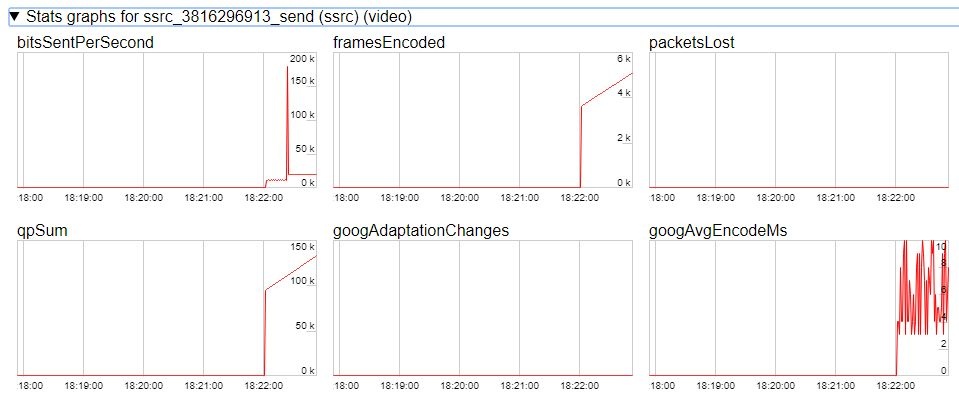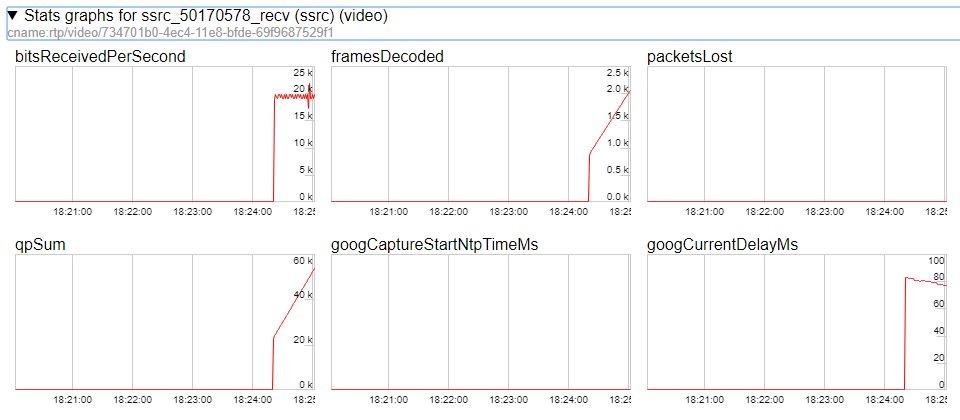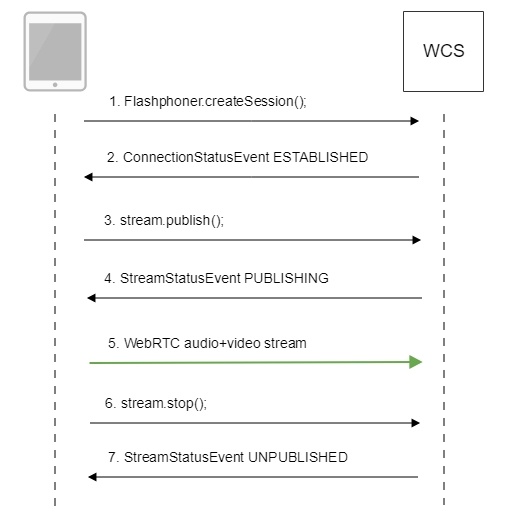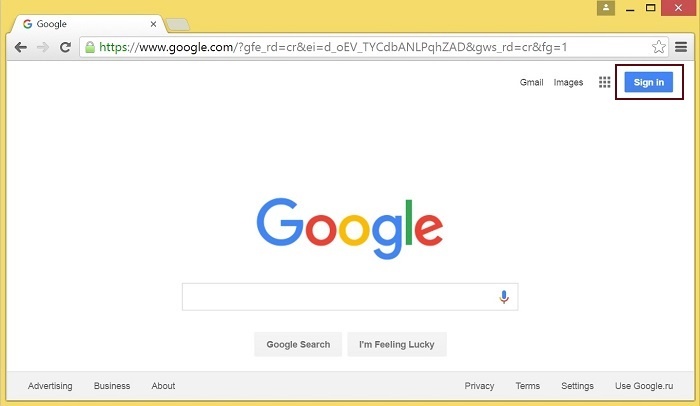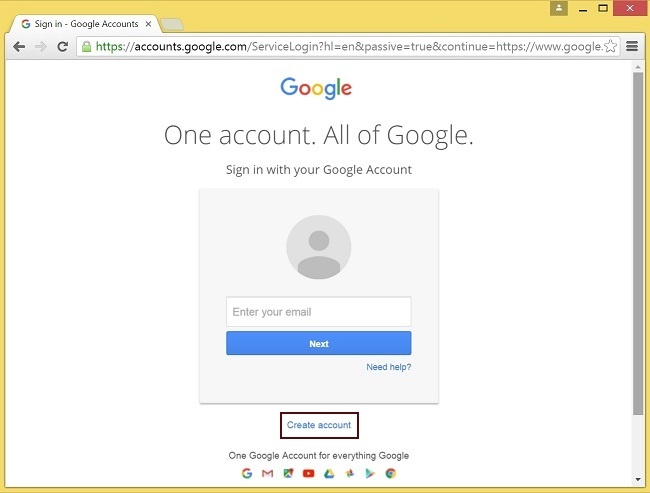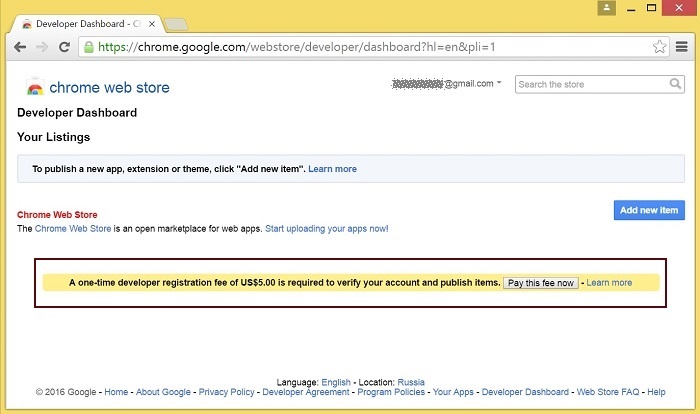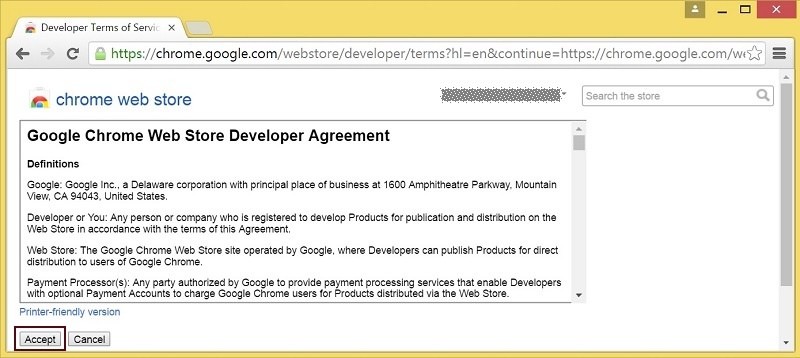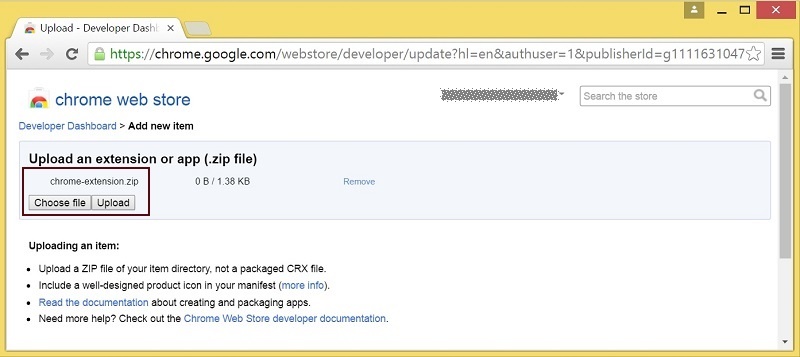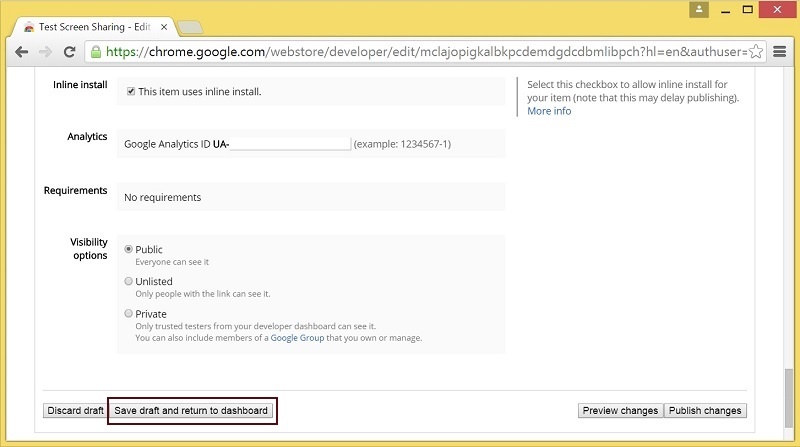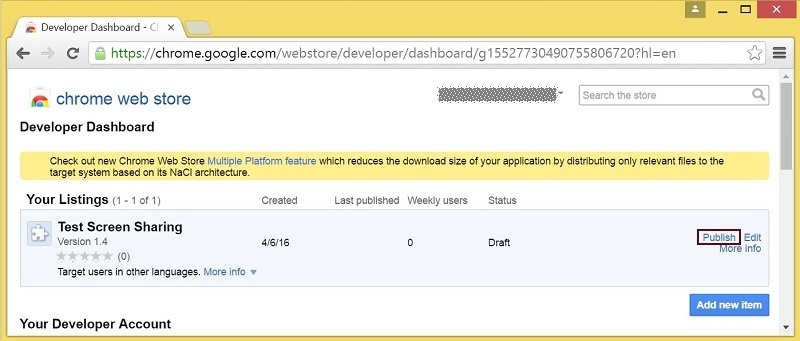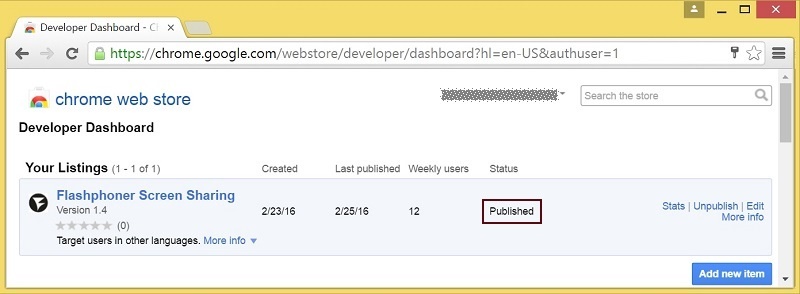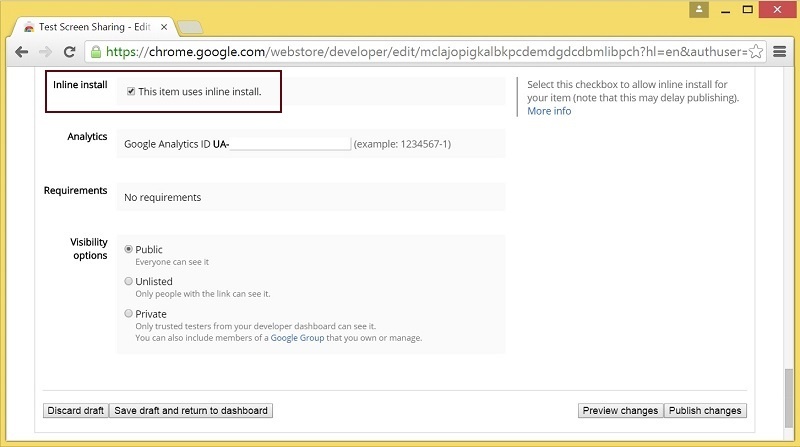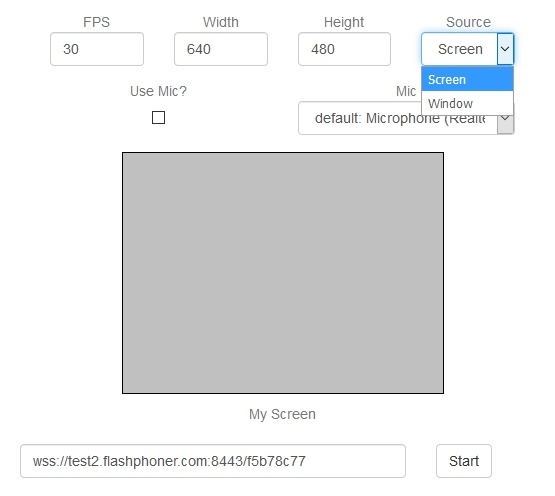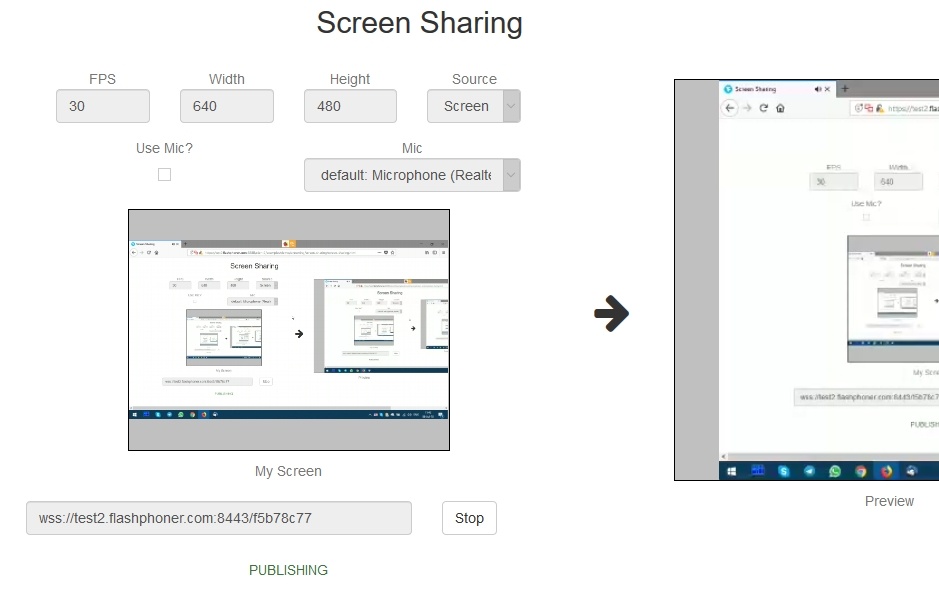Overview
Supported platforms and browsers
Chrome | Firefox | |
|---|---|---|
Windows | + | + |
Mac OS | + | + |
Operation flowchart
1. The browser establishes a connection to the server via the Websocket protocol and sends the publish command.
2. The browser captures the screen and sends a WebRTC stream to the server.
3. The second browser establishes a connection also via Websokcet and sends the play command.
4. The second browser receives the WebRTC stream and plays the stream on the page.
Quick manual on testing
Capturing a video stream from the computer screen and preparing for publishing
1. For the test we use the demo server at demo.flashphoner.com and the Screen Sharing web application in the Chrome browser
https://demo.flashphoner.com/client2/examples/demo/streaming/screen-sharing/screen-sharing.html
2. Click the "Start" button. The browser asks for permission to access the screen, and screen capturing starts, then the stream is publishing:
3. Make sure the stream is sent to the server and the system operates normally in chrome://webrtc-internals
4. Open Two Way Streaming in a new window, click Connect and specify the stream id, then click Play.
5. Playback diagrams in chrome://webrtc-internals
Call flow
Below is the call flow when using the Screen Sharing example
1. Checking if the extension install is required
Browser.isFirefox(), Browser.isChrome(); code
if (Browser.isFirefox()) {
$("#installExtensionButton").show();
...
} else if (Browser.isChrome()) {
$('#mediaSourceForm').hide();
interval = setInterval(function() {
chrome.runtime.sendMessage(extensionId, {type: "isInstalled"}, function (response) {
. if (response) {
$("#extension").hide();
clearInterval(interval);
onExtensionAvailable();
} else {
(inIframe()) ? $("#installFromMarket").show() : $("#installExtensionButton").show();
}
});
}, 500);
} else {
$("#notify").modal('show');
return false;
}
2. Establishing a connection to the server.
Flashphoner.createSession(); code
Flashphoner.createSession({urlServer: url}).on(SESSION_STATUS.ESTABLISHED, function(session){
//session connected, start streaming
startStreaming(session);
}).on(SESSION_STATUS.DISCONNECTED, function(){
setStatus(SESSION_STATUS.DISCONNECTED);
onStopped();
}).on(SESSION_STATUS.FAILED, function(){
setStatus(SESSION_STATUS.FAILED);
onStopped();
});
3. Receiving from the server an event confirming successful connection.
ConnectionStatusEvent ESTABLISHED code
Flashphoner.createSession({urlServer: url}).on(SESSION_STATUS.ESTABLISHED, function(session){
//session connected, start streaming
startStreaming(session);
...
});
4. Publishing the stream.
stream.publish(); code
session.createStream({
name: streamName,
display: localVideo,
constraints: constraints
}).on(STREAM_STATUS.PUBLISHING, function(publishStream){
...
}).on(STREAM_STATUS.UNPUBLISHED, function(){
...
}).on(STREAM_STATUS.FAILED, function(stream){
...
}).publish();
5. Receiving from the server an event confirming successful publishing.
StreamStatusEvent, статус PUBLISHING code
session.createStream({
name: streamName,
display: localVideo,
constraints: constraints
}).on(STREAM_STATUS.PUBLISHING, function(publishStream){
...
setStatus(STREAM_STATUS.PUBLISHING);
//play preview
session.createStream({
name: streamName,
display: remoteVideo
}).on(STREAM_STATUS.PLAYING, function(previewStream){
document.getElementById(previewStream.id()).addEventListener('resize', function(event){
resizeVideo(event.target);
});
//enable stop button
onStarted(publishStream, previewStream);
}).on(STREAM_STATUS.STOPPED, function(){
publishStream.stop();
}).on(STREAM_STATUS.FAILED, function(stream){
//preview failed, stop publishStream
if (publishStream.status() == STREAM_STATUS.PUBLISHING) {
setStatus(STREAM_STATUS.FAILED, stream);
publishStream.stop();
}
}).play();
}).on(STREAM_STATUS.UNPUBLISHED, function(){
...
}).on(STREAM_STATUS.FAILED, function(stream){
...
}).publish();
6. Sending the audio-video stream via WebRTC
7. Stopping publishing the stream.
stream.stop(); code
session.createStream({
name: streamName,
display: localVideo,
constraints: constraints
}).on(STREAM_STATUS.PUBLISHING, function(publishStream){
/*
* User can stop sharing screen capture using Chrome "stop" button.
* Catch onended video track event and stop publishing.
*/
document.getElementById(publishStream.id()).srcObject.getVideoTracks()[0].onended = function (e) {
publishStream.stop();
};
...
setStatus(STREAM_STATUS.PUBLISHING);
//play preview
session.createStream({
name: streamName,
display: remoteVideo
}).on(STREAM_STATUS.PLAYING, function(previewStream){
...
}).on(STREAM_STATUS.STOPPED, function(){
publishStream.stop();
}).on(STREAM_STATUS.FAILED, function(stream){
//preview failed, stop publishStream
if (publishStream.status() == STREAM_STATUS.PUBLISHING) {
setStatus(STREAM_STATUS.FAILED, stream);
publishStream.stop();
}
}).play();
...
}).publish();
8. Receiving from the server an event confirming unpublishing of the stream.
StreamStatusEvent, статус UNPUBLISHED code
session.createStream({
name: streamName,
display: localVideo,
constraints: constraints
}).on(STREAM_STATUS.PUBLISHING, function(publishStream){
...
}).on(STREAM_STATUS.UNPUBLISHED, function(){
setStatus(STREAM_STATUS.UNPUBLISHED);
//enable start button
onStopped();
}).on(STREAM_STATUS.FAILED, function(stream){
...
}).publish();
To developer
The screen sharing function can be used to publish a video stream that demonstrates the desktop or an application window. Source code for the extension is available by the following link: Chrome Screen Sharing Extension 1. Go to google.com and click ‘Sign in’ button 2. On the ‘Sign in’ page, click ‘Create account’ link 3. ‘Create your Google Account’ page will be opened 1. Sign in to Chrome Developer Dashboard with the created Google account Follow the procedures described below to use the extensions with your domain. Change: Save your icons for the extension to chrome-extension directory and edit the file names in "icons" and "web_accessible_resources". (For more information, see Manifest - Icons and Supplying Images.) Package files from chrome-extension folder into ZIP archive. 1. Sign in to Chrome Developer Dashboard 3. Accept the developer agreement 4. On the ‘Upload’ page, choose the chrome-extension.zip file and click ‘Upload’ button 5. When the extension is uploaded, the page for editing the extension draft will be opened 6. The extension will appear in the developer dashboard A published extension will have status ‘Published’ as on the image below. For more information, see Chrome Web Store Publishing Tutorial. Extension installation can be initiated by clicking a link on the Screen Sharing client page. Follow the procedures described below to use the client with your extensions. 1. When publishing, select ‘Inline Install’ option 2. Verify and add website with your domain to the extension - Google Search Console page will open in a new tab - A page with the instruction for the site verification will open - If the verification is passed, a page confirming successful verification will be opened - The website will appear in the list in the extension options and the extension can be associated with the site Edit Screen-sharing.html and Screen-sharing.js To get the ID of the extension, click ‘More info’ of this extension in Chrome Developer Dashboard. To configure screen media source parameters, use parameters of the Configuration object passed to the init() method upon initializing of the Flashphoner API instance. Parameter Description screenSharingVideoWidth Screen media source width screenSharingVideoHeight Screen media source height screenSharingVideoFps Screen media source framerate These parameters set marginal values of resolution and framerate (FPS). For instance, screenSharingVideoWidth = 1080 means the width of the source video cannot be more than 1080 pixels, but can be less. (i.e. when sending a stream of an app window that has the width of 720 pixels). In Chrome browser, there is ability to translate audio stream from system sound source while capturing a screen. The feature is useful in screencasting, for example. To capture system sound, set "Share audio" option in Chrome extension dialog window while choosing streaming source window or browser tab: Chrome extension code: In Firefox browser, all the screen or some program window can be chosen as video stream source with constraints.video.mediaSource parameter code: Source selection interface example: Program window capture Screen capture Firefox browser does not use extension to share screen Since Chrome 73 and Flashphoner WebSDK 0.5.28.2753.86 screen sharing is possible without extension. To do this Since Safari 13 and Flashphoner WebSDK 0.5.28.2753.152 screen sharing is possible without extension. To do this 1. In Chrome browser, picture resolution and FPS are set by source dimensions (screen, windows or browser tab) and by real picture updating speed, not by constraints/ This issue is fixed since Flashphoner WebSDK build 0.5.28.2753.152 2. System sound capture only works starting from Crome 74
WCS API uses a Chrome extensions for screen sharing. Firefox browser since version 52 does not require an extension.Extension for Google Chrome with publication in Chrome Store
Create a Google account
Fill the required fields and click ‘Next step’ button to create the account.Register as Chrome Web Store Developer
2. Pay a one-time $5 developer signup feeCustomization for your domain
Edit manifest file manifest.json of the Chrome extension.Package the extension
Publish the extension
2. In the dashboard, click ‘Add new item’ button
Edit the extension as required and click ‘Save draft and return to dashboard’ button at the bottom of the page.
Click ‘Publish’ link to publish the extension.Extension Inline Installation
Note that the extension to be installed should be customized, published and approved before inline installation can be used.
- Click ‘Add a New Site’
Enter URL with your domain.
Follow the procedure steps and click ‘Verify’ button.Configuring the client
Media source parameters
var f = Flashphoner.getInstance();
var configuration = new Configuration();
....
configuration.screenSharingVideoWidth = 1920;
configuration.screenSharingVideoHeight = 1080;
configuration.screenSharingVideoFps = 10;
f.init(configuration);
Parameter list
System sound capture in Chrome browser
callback({sourceId: sourceId, systemSoundAccess: opts.canRequestAudioTrack});
Capture source (screen or window) management in Firefox browser
constraints.video.type = "screen";
if (Browser.isFirefox()){
constraints.video.mediaSource = $('#mediaSource').val();
}
session.createStream({
name: streamName,
display: localVideo,
constraints: constraints
})
Screen sharing without extension
Firefox browser
Chromium based browsers
constraints.video.withoutExtension parameter should be passed when stream is created if ($("#woChromeExtension").prop('checked')) {
constraints.video.withoutExtension = true;
}
Safari browser in MacOS
constraints.video.withoutExtension parameter should be passed when stream is created if ($("#woChromeExtension").prop('checked') || Browser.isSafari()) {
constraints.video.withoutExtension = true;
}
Known limits
Known issues
1. If the web applicaiton is inside an iframe element, publishing of the video stream may fail.
Symptoms: IceServer errors in the browser console.
Solution: put the app out of iframe to an individual page.
2. If publishing of the stream goes under Windows 10 or Windows 8 and hardware acceleration is enabled in the Google Chrome browser, bitrate problems are possible.
Symptoms: low quality of the video, muddy picture, bitrate shown in chrome://webrtc-internals is less than 100 kbps.
Solution: turn off hardware acceleration in the browser, switch the browser of the server to use the VP8 codec.
3. All streams captured from the screen stop if any one of them stops
Symptoms: while multiple streams are captured from the screen on one tab in the Chrome browser, if one stream is stopped, all streams stop.
Solution: cache tracks by the source of the video and stop them along with the last stream that uses that source, for example:
var handleUnpublished = function(stream) {
console.log("Stream unpublished with status " + stream.status());
//get track label
var video = document.getElementById(stream.id() + LOCAL_CACHED_VIDEO);
var track = video.srcObject.getVideoTracks()[0];
var label = track.label;
//see if someone using this source
if (countDisplaysWithVideoLabel(label) > 1) {
//remove srcObject but don't stop tracks
pushTrack(track);
video.srcObject = null;
} else {
var tracks = popTracks(track);
for (var i = 0; i < tracks.length; i++) {
tracks[i].stop();
}
}
//release resources
Flashphoner.releaseLocalMedia(streamVideoDisplay);
//remove stream display
display.removeChild(streamDisplay);
session.disconnect();
};
4. Chrome browser stops sending video traffic when applicatiion window captured is minimized
Symptoms: if an application window captured is minimized to task bar, the stream freezes at subscribers side, and publishing may fail by RTP activity
Solution: in builds before 5.2.1784 disable RTP activity control for all the streams
rtp_activity_video=false
in builds since 5.2.1784 disable video RTP activity control by stream name template, for example
rtp_activity_video_exclude=.*-screen$

